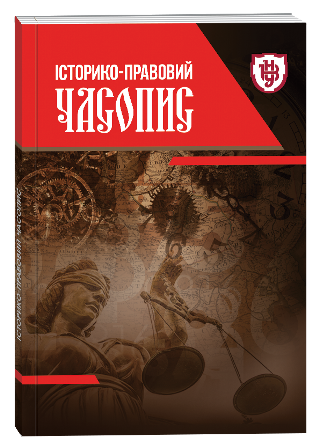Об'єкт і предмет авторського права в Польщі: загальні питання
Ключові слова:
авторське право, предмет, об'єктАнотація
Предметомцього дослідження є питання, пов'язані з об'єктом та предметом авторського права в Польщі.Проаналізовано відповідні положення Закону про авторське право і суміжні права від 4 лютого 1994 року. Цей акт встановлює, що об’єктом авторського права є будь-який прояв творчої активності індивідуального характеру, визначеного в будь-якій формі, незалежно від цінності, мети та способу вираження. У Законі визначено об’єкти, що не захищаються авторським правом: 1) нормативні акти чи їх офіційні проекти; 2) офіційні документи, матеріали, знаки та символи; 3) опубліковані описи патентів або охоронних документів; 4) прес-релізи. Відповідно до закону, авторське право належить творцеві, якщо законом не передбачено інше. Закон містить правову презумпцію, згідно з якою творець це особа, ім'я якої в цій якості була показана на примірниках твору або авторство якого було іншим чином оприлюднене у зв'язку з поширенням роботи. Передбачено судовий спосіб вирішення спорів щодо розпорядження авторським правом між співавторами об’єкту інтелектуальної власності. Цей акт також містить положення про об’єкти інтелектуальної власності, створені найманими працівниками згідно із контрактом, згідно із якими якщо закон або трудовий договір не передбачають іншого, роботодавець, чий працівник створив роботу в результаті виконання зобов'язань за трудовими відносинами, на момент прийняття роботи набуває майнових прав у межах, що випливають з мети трудового договору та узгоджених намірів сторін.
Посилання
Wściubiak Ł. Prawne narzędzia ochrony własności intelektualnej [w] D. Markiewicz (red.), komercjalizacja wyników badań naukowych, Kraków, 2010, s. 9- 19; Michniewicz G. Ochrona własności intelektualnej, Warszawa, 2012.
Ustawa o prawie autorskim i prawach pokrewnych z dnia 4 lutego 1994 r.Tekst jednolity: Dz.U. z 2017r., poz. 880 z późn. zm.
Czub K. Zakres przedmiotowy komercjalizacji własności intelektualnej w publicznych szkołach wyższych «Państwo i Prawo», 2016, nr 10, s. 62-80
Wyrok Sądu Najwyższego z dnia 3 lutego 2017 r., sygn. akt II CSK 400/16; wyrok Naczelnego Sądu Administracyjnego z dnia 4 grudnia 2015 r., sygn. akt II FSK 2789/13; wyrok Sądu Apelacyjnego w Warszawie z dnia 23 października 2015r., sygn. akt I ACa 121/15; wyrok Sądu Apelacyjnego w Warszawie z dnia 7 października 2015r., sygn. akt VI ACa 1200/14;wyrok Sądu Apelacyjnego we Wrocławiu z dnia 26 lutego 2015r. sygn. akt III AUa 1411/14; wyrok Sądu Apelacyjnego w Łodzi z dnia 23 lipca 2013r., sygn. akt I ACa 316/13; wyrok Sądu Apelacyjnego w Białymstoku z dnia 22 marca 2013r., sygn. akt I ACa 681/12; wyrok Sądu Apelacyjnego w Lublinie z dnia 5 lutego 2013r., sygn. akt I ACa 681/12; wyrok Sądu Najwyższego z dnia 30 czerwca 2005r., sygn. akt IV CK 763/04; wyrok Sądu Najwyższego z dnia 25 maja 2011r., sygn. akt II CSK 527/10.
Barta J., Markiewicz R. Telewizja interaktywna a prawo autorskie, Warszawa 2007; Brzozowska M. Prawo autorskie w reklamie i marketingu, Warszawa 2009.
Tylec G. Ochrona tytułu utworu w prawie polskim, Warszawa 2006.
Barta J., Markiewicz R., Matlak A., Niewęgłowski A., Poźniak-Niedzielska M., Komentarz https://sip.legalis.pl/document-view.seam?documentId=mjxw62zogi3damjvg44tmnbomfrxilrtg4ytcmjsgm4daltqmfyc4mzuhe2tgnrqgq/
Szczepanowska-Kozłowska K. Glosa do wyr. SN z 27.2.2009 r., V CSK 337/08, OSP 2010, Nr 3, poz. 33.Zob. tak wyr. SA w Warszawie z 26.11.2014 r., VI ACa 212/14, Legalis. Jest dyskusyjne, czy można uznać za utwór kombinację zapachową, przybierającą kształt perfum. Wszystko zależy od tego, czy można uznać zapach za sposób ustalenia utworu. Pozytywna odpowiedź na to pytanie mogłaby otwierać drogę do uznania perfum za utwór. Szerzej Jankowska M. Perfumy – czy nowy utwór w świetle najnowszego orzecznictwa w zakresie prawa autorskiego, MoP 2007, Nr 23, s. 1328 i n.
Wyrok Sądu Apelacyjnego w Warszawie z dnia 5 lutego 2015 r., sygn. akt VI ACa 531/14; wyrok Sądu Najwyższego z dnia 5 lipca 2001r., sygn. akt II CKN 907/99.
Wyrok Sądu Apelacyjnego w Warszawie z dnia 6 marca 2003r., sygn. akt I ACa 780/02.
Wyrok Sądu Apelacyjnego w Białymstoku z dnia 4 września 2012r., sygn. akt III APa 7/12.







